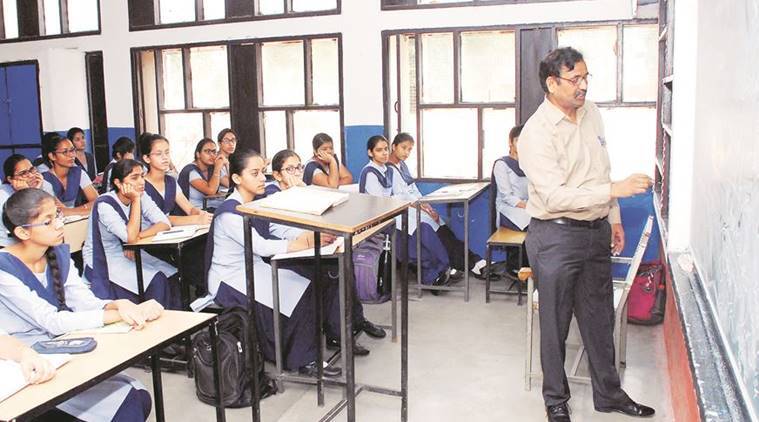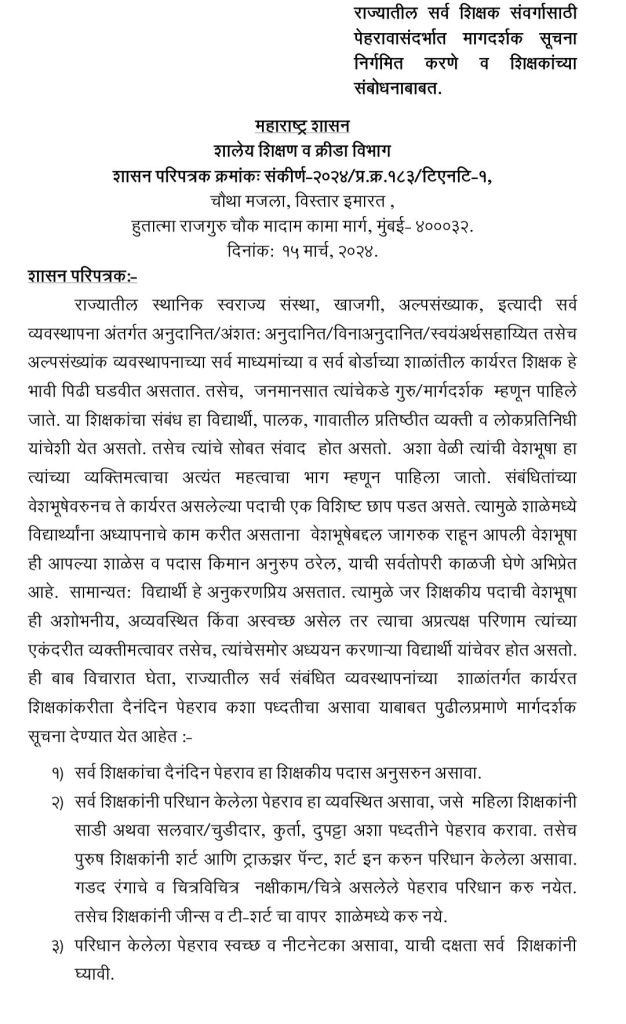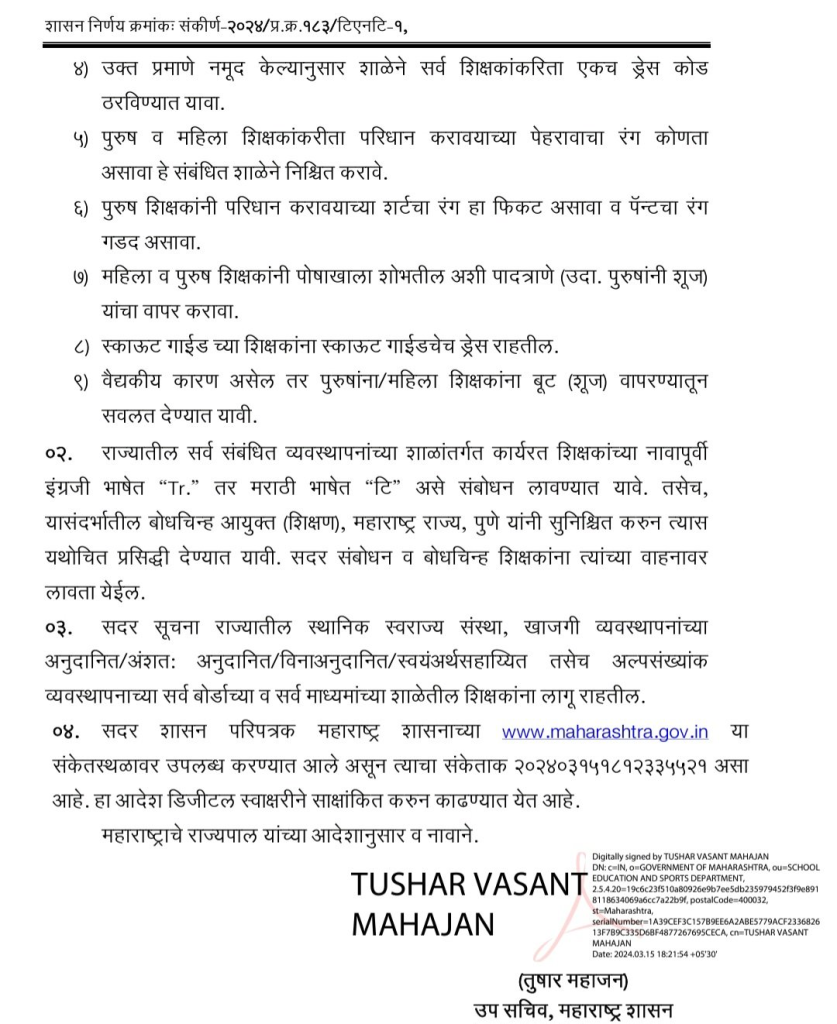Maharashtra Government Implements Dress Code for Teachers

In a bid to uphold professionalism and foster a sense of unity, the Maharashtra government has recently mandated a dress code for teachers across schools in the state. This bold move has stirred conversations and debates among educators, policymakers, and the public alike.


Embracing Change
Change is inevitable, and in the realm of education, it often serves as a catalyst for progress. The decision to implement a standardized code for teachers reflects a proactive approach by the Maharashtra government towards enhancing the educational landscape.
Moving Beyond Casual Attire
Gone are the days when casual attire such as jeans and T-shirts were considered acceptable for educators. The new directive aims to instill a sense of professionalism by prescribing a specific dress code, thereby setting a precedent for sartorial standards in the teaching profession.
Symbolism of Respect
Moreover, akin to the honorific “Dr.” bestowed upon medical professionals, teachers will now be addressed with the prefix “Tr.” before their names, signifying the reverence and respect accorded to them in society.
The Rationale Behind the Decision
The decision to enforce a dress code for teachers stems from a multifaceted rationale aimed at enhancing the overall learning environment and promoting a sense of discipline among educators.
Fostering Discipline
A standardized dress code fosters discipline among teachers, setting a positive example for students and creating a conducive learning atmosphere within schools.
Promoting Professionalism
By delineating a specific dress code, the Maharashtra government seeks to elevate the professional image of teachers, aligning with global standards prevalent in the education sector.
Cultivating Unity
Uniformity in attire fosters a sense of unity and cohesion among faculty members, transcending individual differences and fostering a collective identity within educational institutions.
Implementation and Impact
The implementation of the dress code policy marks a significant milestone in the educational landscape of Maharashtra, with far-reaching implications for teachers, students, and stakeholders alike.
School Autonomy
While the government has outlined the overarching framework for the dress code, schools have been granted autonomy to determine specific attire and color codes, allowing for customization based on institutional ethos and preferences.
Community Engagement
The rollout of the dress code policy has sparked robust engagement within the educational community, with stakeholders actively participating in discussions regarding its implementation and implications.
Shaping Professionalism
Beyond the realm of attire, the dress code initiative serves as a catalyst for shaping a culture of professionalism and excellence within the teaching fraternity, resonating with broader efforts to elevate the status of educators in society.
In conclusion, the Maharashtra government’s decision to enforce a dress code for teachers represents a bold step toward fostering professionalism, discipline, and unity within the educational ecosystem. By setting clear standards and expectations, this initiative not only enhances the image of teachers but also reaffirms their pivotal role in shaping the future generation.









